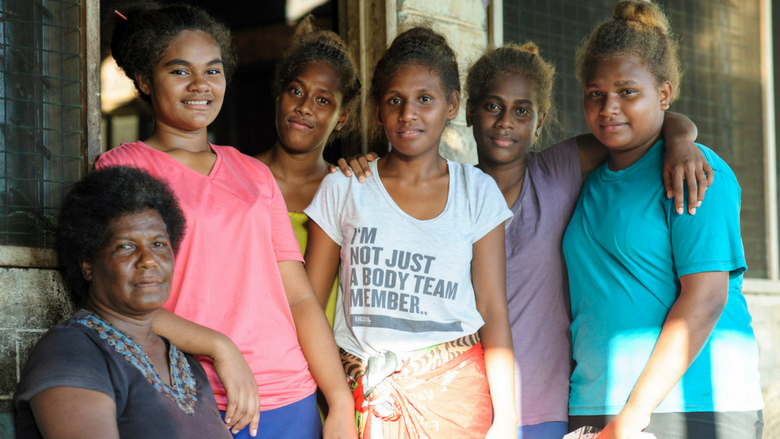
A household in the Solomon (Photo credit: World Bank)
Located in the Pacific Ring of Fire, the Solomon Islands are highly prone to natural hazards. Each year, the country incurs an average loss of $20 million as a result of earthquakes and tropical cyclones alone. Ranked among the top 10 countries with the greatest exposure and vulnerability to disaster, the Solomon Islands face the specter of more severe weather extremes as a result of climate change.
Recognizing the importance of building resilience from the bottom up, GFDRR supports efforts by the government of the Solomon Islands and select provincial governments to engage with communities in the Pacific Island nation so that they can take the lead in managing disaster and climate risks closest to home.
With the support of the ACP-EU Natural Disaster Risk Reduction Program, nearly 70 community-level resilience projects are underway across the provinces of Guadalcanal, Temotu, Malaita, and Central. Local communities are at the helm of these efforts, helping to ensure that results and outcomes are sustainable over the long term.
One example of what has been achieved so far is a community-led effort in the village of Nanggu that has built 15 water standpipes, which provided water to 700 residents and strengthened their ability to cope with natural hazards. Overall, 64,000 people have benefited from the community-level projects, which also include earthquake retrofit strengthening or cyclone strengthening of buildings, foundation raising for flood alleviation, safe footbridges, community safe houses, and shoreline protection measures.
RESULTS IN NUMBERS
Overall, 64,000 people benefited from community-led resilience projects
Nearly 70 community-led resilience projects were supported 7 seismic and volcano monitoring stations were supported
In view of the particular needs and vulnerabilities of women, the community-level projects put a heavy focus on ensuring that they have a key role to play in decision making during the project identification and selection process, as well as during design and implementation. Women are estimated to comprise nearly half of the direct beneficiaries of the project.
Taking a comprehensive approach to community resilience, the Facility is also supporting the national and select provincial governments in integrating disaster risk management in their policies and practices, including at the community level. For instance, this engagement has facilitated the development of nearly 80 community-based disaster risk management plans. It has also enabled the implementation of a revised national disaster management plan designed to strengthen the governance of this sector at the national, provincial, and local levels.
Further, technical assistance is also being provided to strengthen the Solomon Islands’ climate and disaster risk information. The country’s seismic monitoring infrastructure has been enhanced significantly, beefing up authorities’ ability to detect seismic activity and disseminate early warnings to communities. A milestone achievement has been the modernization of the Ministry of Environment, Climate Change, Disaster Management and Meteorology (MECDM)’s risk information management system, making climate and disaster risk data much more usable and accessible for end users.
